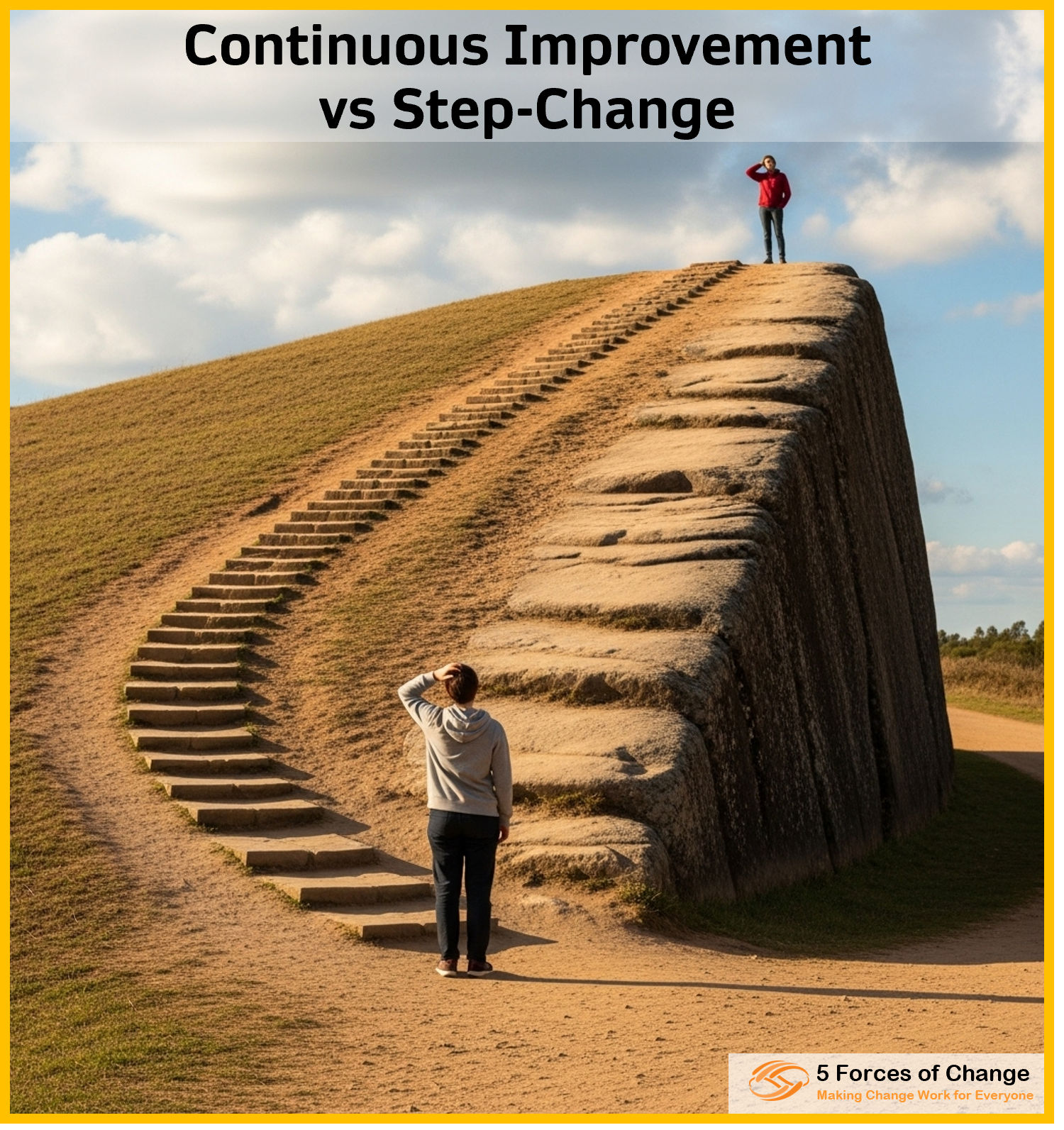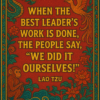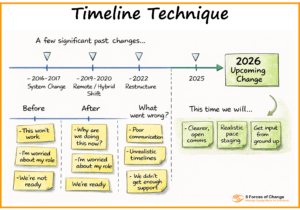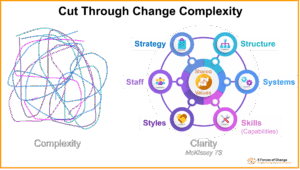Continuous Improvement vs Step-Change: Which Transformation Approach Wins? The answer isn’t what most consultants will tell you.
After more than two decades of leading organisational transformations across industries, I’ve witnessed both continuous improvement and step-change a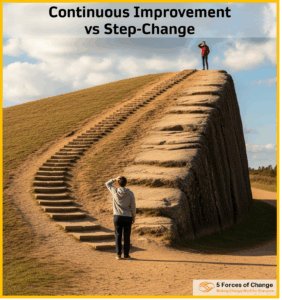 pproaches deliver spectacular successes – and equally spectacular failures. The difference isn’t in the methodology itself, but in understanding when each approach serves your organisation best.
pproaches deliver spectacular successes – and equally spectacular failures. The difference isn’t in the methodology itself, but in understanding when each approach serves your organisation best.
Most transformation discussions frame this as an either/or decision. That’s the first mistake. The real question isn’t which approach is superior, but rather: which does your current situation demand, and how do you sequence them for maximum impact?
When Continuous Improvement Takes the Crown
Continuous improvement shines brightest when your organisation already possesses the cultural foundation for sustained change. If your team embraces learning, your leadership remains stable, and your stakeholders understand that meaningful transformation takes time, then incremental progress can compound into remarkable results.
The CI approach works exceptionally well when you’re facing gradual competitive pressures rather than existential threats. Your people need to build confidence through small victories, especially when you’re optimising existing processes rather than completely reimagining them. There’s something powerful about the momentum that builds when teams see consistent, measurable progress week after week.
Toyota’s legendary Kaizen approach perfectly exemplifies this philosophy in action. Through decades of incremental improvements – tiny adjustments to manufacturing processes, minor workflow optimisations, and continuous skill development – Toyota transformed incremental gains into sustained competitive advantage. Their approach didn’t just improve efficiency; it created a culture where improvement became everyone’s responsibility.
The beauty of continuous improvement lies in its sustainability. When people participate in gradual change, they own it. They understand it. They can sustain it even when external pressures mount or leadership attention shifts elsewhere.
When Step-Change Becomes Essential
However, there are moments when gradual improvement simply isn’t enough. When your industry faces disruption – think Blockbuster’s encounter with Netflix – incremental changes feel like rearranging deck chairs on the Titanic. Sometimes, the performance gap between where you are and where you need to be is so vast that continuous improvement would take years you simply don’t have.
Step-change becomes crucial when your current culture actively resists transformation. Paradoxically, organisations that most need gradual change are often least equipped to execute it. When you’re working within a narrow competitive window, when stakeholders demand visible and dramatic results, when your very survival depends on rapid transformation – that’s when you need shock therapy, not gentle adjustment.
Microsoft’s cloud pivot under Satya Nadella demonstrates step-change at its most effective. The company couldn’t gradually transition from its Windows-centric model to cloud-first computing. The market was moving too fast, competitors were too aggressive, and the cultural shift required was too fundamental. Nadella orchestrated a dramatic reinvention that completely repositioned Microsoft in the technology landscape.
The power of step-change lies in its ability to break through organisational inertia and create new possibilities that people couldn’t previously imagine.
The Strategic Sequence: Beyond Either/Or
Here’s what two decades of transformation experience has taught me: the most successful organisations don’t choose between these approaches – they sequence them strategically.
Start by honestly assessing the urgency of your situation. If you’re facing a genuine crisis, step-change must come first. There’s no time for gradual adjustment when the building is burning. Next, evaluate your cultural readiness. Resistant cultures often require shock therapy before they can embrace continuous improvement.
Consider the performance gap you need to close. Small gaps suggest continuous improvement; large gaps demand step-change. But here’s the crucial insight: plan the sequence from the beginning. Use step-change to create a new baseline, then implement continuous improvement to optimise and sustain those gains.
What’s the biggest mistake leaders make? Choosing continuous improvement when they actually need step-change because it feels less risky and more manageable. Sometimes the biggest risk is moving too slowly while competitors surge ahead or market conditions deteriorate beyond recovery.
The Leadership Question
This brings us to the fundamental question every leader must answer honestly: Are you choosing the approach your situation truly demands, or are you selecting the one that feels more comfortable?
Comfort is often the enemy of necessary transformation. The approach that feels safest in the short term might be the one that puts your organisation at greatest risk in the long term.
The best transformations use step-change to break through barriers and limitations, then embed continuous improvement to sustain and build upon those gains. It’s not either/or-it’s when/then. Master this sequence, and you’ll have the framework for transformation that doesn’t just succeed but endures

